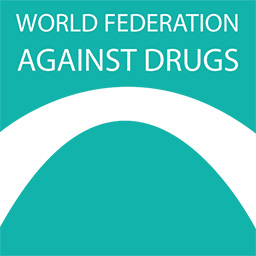During the 16 days of activism, which started on November 25th on the International Day for the Elimination of Violence Against Women and will end on December 10th on the International Day of Human Rights, the WFAD Gender Working Group is publishing statements every day highlighting issues faced by different specific populations while continuing to highlight the topic of this year: UNiTE! Activism to End Violence against Women and Girls
Gender-based violence and substance use are strongly interlinked. The negative health impact the experienced violence has on the survivor can lead to substance misuse. Additionally, substance use perpetrator often accelerates violence. Therefore, each statement, calling for preventing and eradicating gender-based violence, also calls for substance use prevention as well as sensitised and comorbid treatment.

Women in rural and severely underprivileged areas remain one of the most vulnerable groups to Gender Based Violence and Intimate Partner Violence in their communities and in their homes. To date, information on rural women, their experiences with domestic violence, and social development is both fragmented and inconsistent. The issue of access to justice for rural women is based on the premise that violence against women keeps women in conditions of poverty, and fear of poverty keeps women trapped in violent situations. It will be argued that systemic discrimination against rural women has led to the inadequate implementation of legislation and policy relating to women’s fundamental rights to safety and freedom from violence.
Geographical and social isolation characterise the lives of many rural battered women. Logan, Shannon, and Walker (2005) show that the process of obtaining civil protective orders varies depending on community context and that although there are barriers to obtaining and enforcing protective orders regardless of geographic region, Rural women appear to face more barriers than those in urban areas. The authors show that differences exist in victimisation experiences, protective orders’ stipulations, violations, and perceived effectiveness among Rural and Urban women.
Isolation perpetuates gender inequalities because Rural communities continue to define the role of men and women more narrowly than urban communities do. Young women are more at risk of becoming a victim of domestic violence than older women are. Although not a causal factor, alcohol and other drugs are common situational and background antecedents to the occurrence of domestic violence. For instance, long distances create isolation to a greater degree than in urban areas. The nearest women’s shelter may be many miles away, and the distance may be exacerbated by poor or no public transportation (Lewis, 2003), limited access (DeKeseredy & Joseph, 2006), or sporadic access to the Internet or mobile phones. Websdale (1998) suggests that certain actions by the abuser, such as disabling vehicles and unplugging and removing phones, have even greater implications, isolating women in rural environments, increasing their vulnerability to violence in ways that do not happen in urban areas where public transportation and help are available.
A global initiative towards improving the lives of women in general and Rural women in particular is the consortium “Girls Not Brides” and the African Union Campaign to End Child Marriage. These initiatives have not stopped the practice where young girls are forcefully married off to older men under the guise of a cultural practice called ukuthwala. Mwambene describes ukuthwala as “the mock abduction of an unmarried woman or girl for the purpose of a customary marriage.” The practice is rife amongst the IsiXhosa speakers of the rural parts of the Eastern Cape and amongst IsiZulu speakers of KwaZulu-Natal. Ukuthwala is a form of gender-based violence against women and girls. In spite of globalisation, such practices as ukuthwala perpetuate the stereotype of male superiority.
There is a strong correlation between substance use disorders and gender-based violence that disproportionately affects women. Despite the increased risks women who use drugs and alcohol face, women in Rural/Remote Regions are under-represented in the research literature.
References
Livingstone Malinge Gqeba and Nokuzola Gloria Gqeba https://www.intechopen.com/chapters/71169
Casale D, Posel D. Investigating the well-being of the rural women in South Africa. Agenda: Empowering Women for Gender Equity. Gender & Rurality. 2010;84:46-52
Bower C. The plight of women and children: Advancing South Africa’s least privileged. The Annals of the American Academy of Political and Social Science. 2014;642:106-126. DOI: 10.1177/0002716211351208
Mwambene L. Recent legal responses to child marriage in Southern Africa: The case of Zimbabwe, South Africa and Malawi. African Human Rights Law Journal. 2018;18(2):527-550
Ceccato, Vania. 2015. Violence against women in rural communities https://www.researchgate.net/publication/349151861_Violence_against_women_in_rural_communities


Leave a Reply
You must be logged in to post a comment.